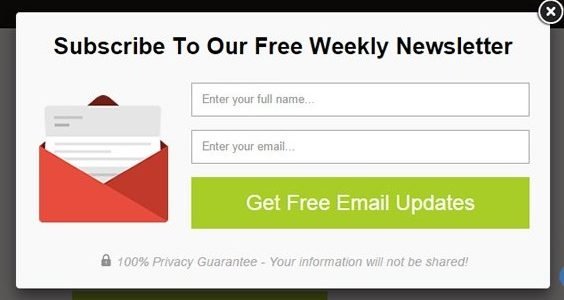Social Media Marketing for Businesses

Social media marketing is a powerful way for businesses of all sizes to reach prospects and customers. Your customers are already interacting with brands through social media, and if you’re not speaking directly to your audience through social platforms like Facebook, Twitter, Instagram, and Pinterest, you’re missing out! Great marketing on social media can bring remarkable success to your business, creating devoted brand advocates and even driving leads and sales.
Social media marketing includes activities like posting text and image updates, videos, and and other content that drives audience engagement, as well as paid social media advertising.
Before you begin creating social media marketing campaigns, consider your business’s goals. Starting a social media marketing campaign without a social strategy in mind is like wandering around a forest without a map—you might have fun, but you’ll probably get lost.
Social Media Marketing Can Help You Meet Your Marketing Goals Such as :
- Increasing website traffic
- Building conversions
- Raising brand awareness
- Creating a brand identity and positive brand association
- Improving communication and interaction with key audiences
The Best Social Media Platforms for Marketing : –
- Google+
- YouTube
For example, Promote Your Facebook page everywhere, Once you’ve got great content on your company’s Facebook Page, make sure you share your Facebook presence on all evergreen content you own and manage.
promote your Facebook Page on your website (homepage, plus header or footer), your e-mail signature, marketing e-mail footers, business cards, and all other digital marketing materials.
Make sure to make it as easy as possible for your audience to get to or like your Facebook Page with one click.
It’s important to post engaging, entertaining, and interesting content on your business Page. Facebook constantly updates its Edgerank algorithm, and rewards posts that receive engagement (likes, comments, shares) with increased reach. Facebook will reward your content by letting your engaged users’ friends know on their newsfeed that they’ve engaged with your content.
Different social media marketing sites require different approaches, so develop a unique strategy tailored for each platform.
Choosing the appropriate Social media network

Social media marketer should carefully a choose which networks would be more prolific for their product type. Here follow some of the most popular networks along with their advantages.
With an audience of 1.2 billion active users per month. It’s increasing day by day.A Facebook offers an opportunity to reach a broad range of customers and potential customers. But how can Facebook contribute to your overall goals? Because Facebooks News Feed is a very visible place for social posts, Its one of the best places for you to distribute your content in order to increase A brand awareness, drive a website traffic and distinguish yourself as a thought leader. This strategy is even more effective when you take advantage of Facebook targeting capabilities that allow you to tailor a your messages to users with certain interests.
Where Facebook has the volume a of users, Twitter has the volume of a messages. In fact, there are more than 500 million tweets per day.A With all those social messages, there is a great chance that someone is either mentioning your company or starting a conversation that you would be interested in joining.
That’s why Twitter is best to use as a customer service and business development channel. Monitor the network for inbound messages from dissatisfied customers, and quickly turn them into happy interactions. At the same time, look for prospective customers.
LinkedIn has a robust network of over 330 million users.A The advantage with this is that LinkedIn is an amazing network for B2B social media marketers. Whereas sites like Twitter and Facebook catch users more or less on their personal time, LinkedIn gives you access to customers when they are at their professional best. Use this to build relationships with future customers.
Google+
One of the great things about a Google+ is that if you have a strong presence on the site and someone searches for your company through a Google,a snippet of your profile will appear on the results page.Another great feature of Google+ is the ability to hyper-target your potential customers by Communities. Communities are groups of people who get together to discuss specific topics, so if you can find one that your customers are likely to be in, you can post content there that might a interest them.
Why it is MUST for you to have email opt-in form in your b2c business website

We all want more email subscribers. One of the easiest ways to get them is to start at the very beginning – the opt-in form. If you can make even a few positive tweaks to the beginning of your opt-in form process, the results will follow through all the way to the end of the year and improve your email ROI – business website nagpur.
To help you get more opt-ins, we’ve combed the web to find all the case studies and best practices for opt-in forms we could. The roster of opt-in form best practices below is that roundup. All data based, split-tested, and ready to go.
Of course, every time we mention best practices, I have to mention that one company’s best practice is not necessarily your own best practice. You’ve got to test. But these should give you some very good testing ideas, and point you toward which test will make the biggest difference in your opt-in form.
Give them a reason.
The best way to boost opt-in rates? It’s to offer an incentive. For B2Bers, that’s usually a free report, or maybe access to a white paper or a video series. Online tools are good alternatives too. So are quizzes.
When Ascend2 did their 2015 survey of how marketers (mostly B2B marketers) are growing their email lists, two tactics rose above the rest:
- Website access
- Content downloads
Content downloads include the white papers, free reports and other assets I just mentioned. Website access is a different thing. Ascend2 defines it as “requiring registration to gain access to private or restricted areas within a website”. Because we’re focused on opt-in forms for this post, we’ll lean a bit more toward content downloads, but both of these tactics share a larger strategy: Get the address in exchange for extra-good content, a key practice used in matching your B2B content with your sales funnel.
Don’t ask for too much on your opt-in form.
You’ve probably heard about how adding more fields to an opt-in form suppresses opt-ins. Very well – did you hear how every field you add reduces opt-ins by 11%?
The below image shows you how many fields other marketers use on their forms – it’s from the 2015 Ascend2 Email List Growth Survey. This survey was offered to a mostly B2B audience – 71% of survey respondents identified themselves as B2B marketers.
After an email address, the most common piece of information to ask for is someone’s first name. Having a first name allows you to put it into subject lines, which has been shown to increase email open rates. It also means you can put their name into the body of the email as a salutation. This is a nice thing to be able to do and most email service providers – Pinpointe included – make it easy to add a person’s name to your emails.
Because we’re in B2B, many of us are going to want more information than just the name. This is when email opt-in practices and lead generation fuse together… for the most email opt-ins, we’d want to keep the opt-in form as short as possible.
How you choose to resolve this completely depends on what your business goals are. Maybe you just want to build your list super-fast, and so you’ll take just the email address and worry about getting more information later. Or maybe you’ll want to get even more information that the long form above asks for.
Don’t hide the opt-in form
Your poor site visitors. They just want to sign up for your email list. They like your company and want to keep tabs on it. Email is their preferred channel, not social media.
Use a feature box for your opt-in form.
This is one of the big kahunas for boosting email opt-ins. Yes, you are putting it on the most valuable real estate of your site: On the home page, above the scroll line, across the entire screen.
But do it, and do it right, and you’ll get half or more of your subscribers from that one opt-in box. I’ve seen these triple opt-in rates overnight.
Use a form, not a link.
When I switch clients from opt-in links (like the one above) to an opt-in form (like the example below it) I usually see a 20-50% increase in opt-in rate.
Why does this happen? People are resistant to clicking through. Having the form right there makes sign up look easier. And so they sign up more often.
Tell them what to expect.
Your opt-in copy, while short, has an important job to do. You have to tell people what to expect. How often will you send them emails? What kinds of content formats will be in those emails (Articles? Case studies? Coloring pages?) Who are your emails designed for (CEOs? Students? One person marketing departments?)
All this influences how many signs up you get, but more importantly, it influences who signs up for your list. The end goal here is not a massive, bloated list of people who aren’t your ideal clients. It’s to have a responsive, engaged audience of ideal subscribers.
RestoreHealth does a good job of this on their email opt-in page. Ideally I’d like this to be in the footer of their site as an opt-in form, but clearly they’d have to trim the copy.
Say something more enticing than “subscribe” on the opt-in form button.
“Subscribe” is pretty boring. Given how extremely valuable the real estate on that button is, let’s try to write something a little more enticing. Even something as mellow as “Sign me up” or “Send me the report” is better.
Of course, you’ll have to test.
You can also test button colors and sizes. Some people think these are kind of wimpy tests to run. I mostly agree with that. Test more powerful things, like the opt-in incentive, or the form’s placement, or the opt-in headline before you start testing button colors.
Offer a sample newsletter, or let them view past issues.
RestoreHealth (from #6) has a link at the bottom of their opt-in page for “View Past Articles”. This is not an essential element of an opt-in form, but sometimes it helps. It’s basically the principle of “try before you buy”. Some people like to see what they’re getting before they sign up.
Call your updates something more interesting than “newsletter”.
The word “newsletter” has associations with being out of date and tedious. It’s a word that’s about as appealing as broccoli (my apologies to broccoli).
So don’t use it. Call your email updates “updates”. Or maybe have a name for your email updates, like they were, you know, a publication. Maybe call your newsletter “The Buzz” if you sell coffee products. Or “The Tip” if you’re in the restaurant business.
Choosing a name for your updates might be the most fun you’ll have brainstorming in a meeting. Or you could outsource the name-picking job to your social media following and run a contest.
While it’s great to come up with a spicy name, it seems like the best word to use instead of “newsletter” is “updates”. That’s what Copyblogger, CrazyEgg and many other sites (that test A LOT) tend to favor.
You could also reframe how people think about your newsletter. Copywriter Joanna Wiebe has taken this to the next level. She refers to her newsletter as “free help” and has gone so far as offering like it was a paid ebook, but for $0.
Use social proof.
This works for a lot of sites. Whether you say how many subscribers you have, or how many followers you have, it’s all good. Don’t be afraid to include what feels like a small number, either. If you’re in a niche business, saying you’ve got 3,000 subscribers on the opt-in form might still be enough to trigger the social proof benefit.
Also notice how:
- the opt-in button is written (“me” versus “you”)
- the opt-in copy tells you how often you’ll be getting the updates
- the gray text in the opt-in field prompting you for your email address
Add a privacy statement.
Just be careful how you do it. Convent Verve has a terrific post about a series of a/b split tests they did on some privacy policy copy in an opt-in box.
Add a link to unsubscribe.
This often works better than a privacy statement. Including the unsubscribe link so close to the opt-in form proves you actually do make it easy to unsubscribe.
Put a default email address in the opt-in form.
Prompt people to put their own email address into the form. It makes them just a wee bit more likely to take action.
Social Media Trend

Scattered audiences; more diverse, yet fragmented platforms; an ever more competitive environment with marketing efforts that put the days of the TV networks to shame: social media sure is getting complicated! Brands have to be on their toes if they’re going to stay up-to-date with the newest and coolest apps and invest some serious resources to keep up with the trends – and know which ones to jump on and which ones are just a flash in the pan.
Social media searches are becoming more powerful. Pinterest announced a visual search feature, where users can actually click within an image to open a new search. For example, if you’re looking at a picture of a living room and want to see more lamps like the one featured in the picture, you can click the lamp, and you’ll be directed to search results for products like that one.
Next big trend: Live social broadcasts are a thing – and it’s not just for the Red Bulls and Coca Colas of the world. People know the difference between ‘reality TV’ and ‘reality’ and they’re more likely to trust a brand that can show exactly what’s happening as it’s happening. With programs like Periscope and Facebook’s new Facebook Live Broadcasts, this is a strategy to explore for 2018.
Even if you’re not ready to explore live broadcasts, videos are still critical to your social strategy. We’ve said this hundreds of times – but it’s worth repeating that video isn’t a can’t miss-trend for social marketing. Consider that:
- Videos average 62% more engagement than photos
- Video shares increased 43% at the start of this year
- Facebook just announced it sees an average of eight billion views a day from 500 million people.
If you’re not producing short, compelling videos for social, what are you waiting for?
Finally – Inbound messages for social customer service are going up. Sprout Social reports that across industries, brands have received 32% more inbound messages this year than last. The problem is that brands still haven’t figured out a game plan for answering – as 82% of messages that brands receive go without response. Have room and resource for some 1:1 engagement in your social plan to stay ahead.
Remember: Keep social, social. People want to see, watch and hear from real life people. And that’s the whole point of social media to begin with, isn’t it?
1. Real Real-Time Engagement
Social media thrives on real-time engagement, but each year the window for response becomes smaller and smaller. According to Search Engine Watch, 70% of Twitter users expect a response from brands they reach out to, and 53% want a response in less than an hour. That number jumps to 72% when they’re issuing a complaint.
In 2014, consumers complained about brands 879 million times on social media. What’s worse is that in 2015, brands still weren’t responding as 7 in 8 messages to them went unanswered within 72 hours.
One of the key strategies marketers need to implement in 2016 is faster response times. Thanks to advances made to social listening and automation tools, if you’re not quick to respond one of your competitors might be. Social media is moving fast, and if your business has a presence on any of the platforms then you’re expected to keep up.

2. Live Streaming Video
Faster response times aren’t the only thing you’ll want to focus on. Consumers also want faster access to real-time, offline events. Live streaming video is considered to be the next big thing in social media marketing thanks to apps like Periscope and Meerkat, which took the Internet by storm in 2015.
Social media allows for communication between brands and customers, but live stream goes a step further, revealing a much more authentic side of your business. It’s unedited, unfiltered and shows that you’re not just reading off of a cue card. Both Periscope and Meerkat allow you to broadcast a live stream of the world around you.

Periscope:
- Owned by Twitter
- Available on iOS and Android
- 2 million daily active users
- 40 years worth of live video is watched daily
- Available in 25 languages
Meerkat:
- Available on iOS and Android
- 2 million registered users
- More than 100,000 videos streamed
- Available in one language
You can see a more in-depth breakdown of Periscope and Meerkat, including similarities and differences, in one of our previous articles.
Neither video service has completely taken over the live streaming space, so both should be considered when creating your social media strategy. One thing to keep in mind is both apps are expected to play a big role in the 2016 Presidential election, so if you’re affiliated in any way, you’ll want to pay close attention to each apps’ strengths and weaknesses.
3. Social Commerce
The more engaged your customers are, the better your sales. Over the last couple of years, we’ve seen social media play a crucial role in this area. In fact, in 2014, total US sales that could be tracked to social media reached $3.3 billion. More recently, research found social influences more shoppers’ buying decisions than retail websites.
Compelling stats like the one above has led to the creation of more commerce-focused features for marketers and advertisers. For example, in 2015:
- Facebook introduced 360 Ads for immersive experiences.
- YouTube added 360 Ads for more impactful visuals.
- Instagram rolled out its action-oriented ad format.
- Pinterest announced the limited rollout of its Buyable Pins.
- Twitter continued testing its Buy button.
In 2016, you’ll want to explore more ways how you can integrate these features into your social media and content strategies. For inspiration, keep an eye out this holiday season to see how businesses use them.
4. SEO
Let’s get one thing clear: content is still king. The mediums might be changing—in 2015 we saw a massive shift from text to media—but the competition for visibility has never been stronger. With more businesses building out their content strategies and the rising advertising costs, optimizing your organic content is at its highest demand.
Although social media doesn’t directly influence your search ranking, greater social signals (such as people sharing your content and sending more traffic to your website) can help you rank higher. Why is this important? Because 33% of traffic from Google’s organic search results go to the first item listed.
Not just that, but social content is becoming increasingly more visible in search results. Google already has deals in place with Facebook and Twitter—you’ve likely already seen a Tweet or two appear in your search results. In 2019 we’ll see more platforms added to the index, further blurring the line between Web and social media.
Your posts on Facebook and YouTube should also be optimized for search. Today 88% of consumers are influenced by reviews and online comments, and they’re turning to these platforms for just that. Searching on Facebook can now turn up public posts, so make sure that yours include relevant keywords and take advantage of character limit and hashtag best practices.
5. Mobile First
What was once considered a bonus is now a necessity. If you’re not thinking mobile first, then you’re already behind. Mobile devices have become the primary (not secondary) screen for most social media users. In 2015, mobile traffic finally overtook desktop traffic in 10 countries, including the US and Japan.
As of January 2015, 80% of Internet users own a smartphone. An estimated 2 billion consumers worldwide are expected to own a smartphone by 2016. Additionally, devices like smart TVs and smartwatches saw a spike in popularity, and we’ll continue to see their adoption rise in the new year.
What does this mean for marketers? Mobile devices—especially smartphones, tablets and smartwatches—should be a big part of your focus. This is crucial if you’re targeting millennials, of which 87% admitted to never being without their smartphone. More importantly, 14% wouldn’t do business with a company that doesn’t have a mobile site or app.
6. Data-Driven Decisions
By now much of the guesswork is disappearing from social media. You know who the key players are in the industry. If you’re a highly visual brand, then Instagram and Pinterest are already on your radar. You’re familiar with character limits and image specs. The basics are taken care of, and now you’re ready to refine your strategy so you can really hone in on quality connections. That’s where social media analytics come in.
Data is already a big part of how you measure social media success, but it’ll play an even bigger role in your 2016 strategy. Marketers have never had this much access to information about consumer preferences before. This data can help you personalize your message and focus on building stronger loyalty and long-term engagement—rather than short-term acquisitions and individual sales.
Using Social Media Analytics
The mass-target approach is on its way out, and personalized, data-driven marketing plans are in. Sprout’s robust suite of social media analytics and reporting tools will help you dig deeper into your strategy and get the most out of your efforts. Gain valuable insights around platform-specific strategies, what’s trending or your team’s performance as a whole. Then you can use that information to craft unique, personalized experiences for your customers.
But let’s be clear about something. Making data-driven decisions doesn’t mean you should let things like follower counts and the number of Likes your posts receive drive all of your business decisions. More importantly, numbers shouldn’t replace creativity. Relationship building is fluid and unique to the individual, whereas number crunching is purely analytical. You need to create a balance between these two approaches in order to be successful.
Moving Forward
As 2019 begins, it’s important that you and your team take some time to reflect on the past year and all of the changes that it brought. We expect a lot of great changes to come in 2019, but it’s helpful to know what has worked and what hasn’t so you can carry those lessons with you in the new year.
Email Opt-in



Latest publications
Latest publications list on home page – Something that visitors looks for :

Online Marketing
Online marketing is how smart entrepreneurs are pumping up traffic to their sites these days. Online marketing may sound Pig Latin to company owners who are not savvy in subjects outside the book of business, but it is actually pretty simple. Internet marketing nerds working with online marketing companies has mastered it all. WebMasterKey and similar other companies have brought the potent tools of online marketing within the means and reach of businesses of all sizes and scales.

Online Marketing: How It’s Done?
The idea of online marketing rests on the target of finding a business its diameter of operation and its batch of audiences, a significant portion of which make potential leads. Here is how online marketing businesses like WebMasterKey approach the technique:
Pinpointed Focus on Clients: Blind out all distractions of possible audiences and focus on your customers alone. They are the lifeblood of a business and to build your empire, you’ll need the support of your clients, partners and prospects. So, service providers never let them out of their sight.
Building Marketing Frameworks: Growth frameworks, and not campaigns is the mantra of successful marketing. Gain leverage from metrics in order to create a solid and bankable stream of revenue.
A Brand Story to Tell: Hook your audiences with a compelling story about your business. But your company may not have a fascinating backstory. So what? That’s why you have writers. The story whatever be it needs to be articulated well, and it will surely be heard.
Traffic Acquisition: Flashy shopfronts and amazing blogs cannot help much with traffic acquisition. A paid framework is what makes a difference or two.
Conversation Optimization: Driving up sales is a two-step process, the first in which the visitor has to be converted to buyer, and second in which the buyer is to be changed to repeat buyer.
5 important plugins that can be used in wordpress
While WordPress offers a ton of features and flexibility, there is still a lot of functionality missing from the core software. The best way to fill in the missing pieces, of course, is to get yourself the right plugins.
Plugins offer all kinds of customization for site admins, however, with almost 40,000 options to choose from it the WordPress Plugin Directory, not to mention all the premium products available, it can be difficult sorting the good from the, well, not so good.

Jetpack simplifies managing WordPress sites by giving you visitor stats, security services, speeding up images, and helping you get more traffic. Jetpack is a free plugin.
Traffic Growth & Insights
Jetpack tells you how many visits your site gets and helps you get more traffic with tools like Related Posts, Publicize, Enhanced Distribution, and Sharing.
Security
Jetpack protects your site against brute force attacks and unauthorised logins. We also monitor your site for downtime and keep your plugins updated.
Image Performance
Jetpack automatically optimizes and speeds up images using the global WordPress.com content delivery network. This saves you hosting costs by reducing bandwidth.
Centralized Management
With Jetpack comes a centralized dashboard on WordPress.com. Manage plugins and menus, publish posts, and view enhanced site stats for all of your sites.
A few more things that our users love
Jetpack includes other features that help you customize your site including Custom CSS, Contact Forms, Galleries and Carousels, Notifications and Subscriptions, Configurable Widgets, and many more.
2. Duplicator

The Duplicator gives WordPress administrators the ability to migrate, copy or clone a site from one location to another. The plugin also serves as a simple backup utility. The Duplicator supports both serialized and base64 serialized string replacement. If you need to move WordPress or backup WordPress this plugin can help simplify the process. For complete details visit lifeinthegrid.com.
3. Visual form Builder

Visual Form Builder is a plugin that allows you to build and manage all kinds of forms for your website in a single place. Building a fully functional contact form takes only a few minutes and you don’t have to write one bit of PHP, CSS, or HTML!
Features
- Add fields with one click
- Drag-and-drop reordering
- Simple, yet effective, logic-based anti-SPAM system
- Automatically stores form entries in your WordPress database
- Manage form entries in the WordPress dashboard
- Export entries to a CSV file
- Send form submissions to multiple emails
- jQuery Form Validation
- Customized Confirmation Messages
- Redirect to a WordPress Page or a URL
- Confirmation Email Receipt to User
- Standard Fields
- Required Fields
- Shortcode works on any Post or Page
- Embed Multiple Forms on a Post/Page
- One-click form duplication. Copy a form you’ve already built to save time
- Use your own CSS (if you want)
- Multiple field layout options. Arrange your fields in two, three, or a mixture of columns.
Field Types
- Fieldset
- Section (group fields within a fieldset)
- Text input (single line)
- Textarea (multiple lines)
- Checkbox
- Radio (multiple choice)
- Select dropdown
- Address (street, city, state, zip, country)
- Date (uses jQuery UI Date Picker)
- URL
- Currency
- Number
- Time (12 or 24 hour format)
- Phone (US and International formats)
- HTML
- File Upload
- Instructions (plain or HTML-formatted text)
Entries
- Manage submitted entries in WordPress dashboard
- Bulk Export to CSV
- Bulk Delete
- Advanced Filtering
- Search across all entries
- Collect submitted data as well as date submitted and IP Address
Customized Confirmation Messages
- Control what is displayed after a user submits a form
- Display HTML-formatted text
- Redirect to a WordPress Page
- Redirect to a custom URL
Notification Emails
- Send a customized email to the user after a user submits a form
- Additional HTML-formatted text to be included in the body of the email
- Automatically include a copy of the user’s entry
SPAM Protection
- Automatically included on every form
- Uses a simple and accessible, yet effective, text CAPTCHA verification system
4. Simple css

Need to add some custom CSS to your site? Simple CSS gives you an awesome admin editor and a live preview editor in the Customizer so you can easily add your CSS.
Want your CSS to only apply on a specific page or post? Simple CSS adds a metabox which allows you to do just that.
Features include:
- Full featured admin CSS editor
- Dark and light editor themes
- CSS editor in the Customizer so you can live preview your changes
- Metabox for page/post specific CSS
5.Cyclone Slider 2

Cyclone Slider 2 is an easy-to-use slideshow plugin with an intuitive user interface. It’s simple yet extensible.
Why Use It?
- Simplified workflow: 1.) Add slides 2.) Set slideshow properties 3.) Choose a template 4.) Publish! You can choose between a shortcode or a php function (for themes) to display.
- Supports 5 different slide types: image, YouTube, Vimeo, custom HTML, and testimonial slides.
- Translation ready and RTL support. Ideal for languages other than English.
- Comes with 4 core templates: Dark, Default, Standard and Thumbnails.
- Advance template system. Not happy with the core templates? The template system allows developers to customize the slideshow appearance and behavior. Perfect for every client projects. More info on templating here.
- Selective loading. Load only the scripts and styles that you need.
- Import/export selected slideshows. Moving your slideshow to a different website? No problemo.
- It’s FREE!
More Features
- Ability to add per-slide transition effects.
- Customizable tile transition effects.
- Unlimited sliders.
- Unique settings for each slider.
- Supports random slide order.
- Shortcode for displaying sliders anywhere in your site.
- Ability to import images from NextGEN (NextGEN must be installed and active).
- Ability to use qTranslate quick tags for slide title and descriptions (qTranslate must be installed and active).
- Allows title and alt to be specified for each slide images.
- Comes with a widget to display your slider easily in widget areas.
- Ability to fine tune the script settings. You can choose what scripts to load and where to load them.
Engaging Website

Engaging Business Website – A website that’s just not a mere online presentation but your strong online presence that highlights your Unique Selling Propositions (USP) effectively and sells for you 24 x 7 x 365. From the photographs and contents you provide, we make 4-5 graphic rich banners on the home page that communicates the point to visitors in first 30 seconds that compels him/her to dig more and more details of the website and enquire.



